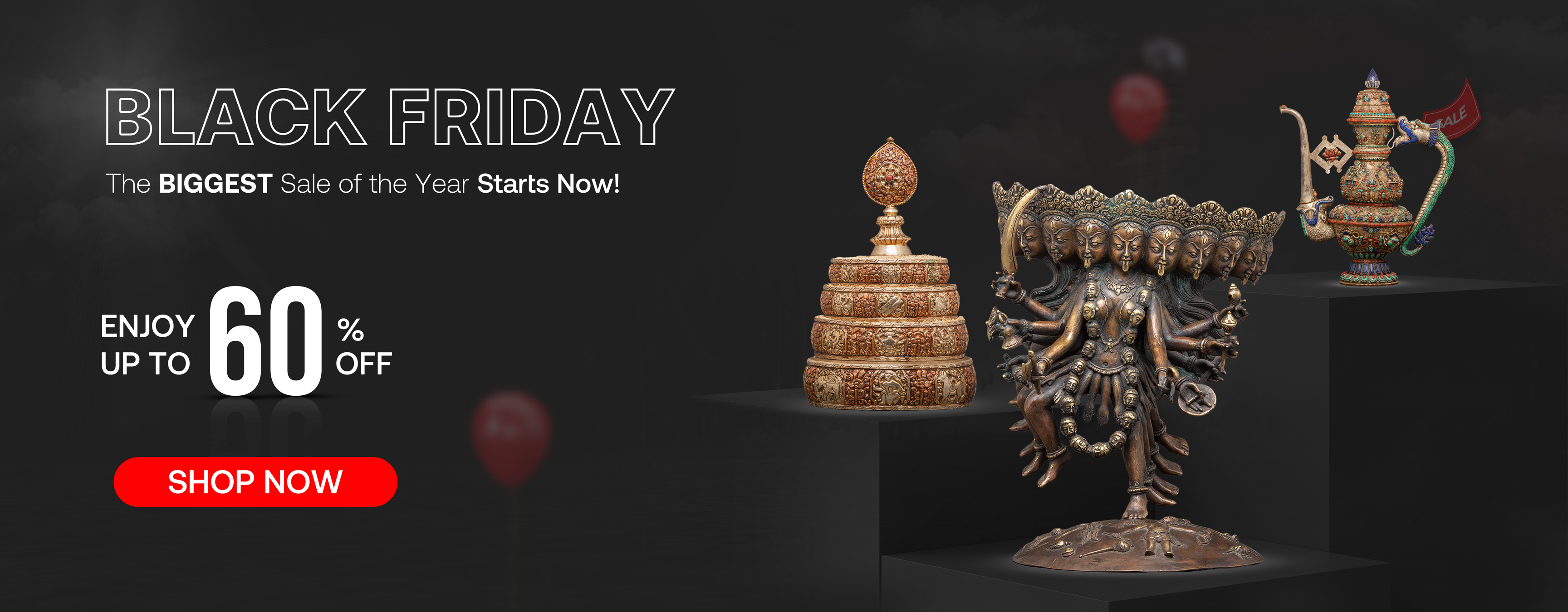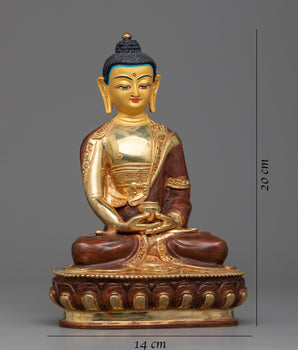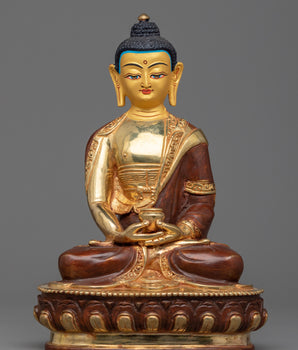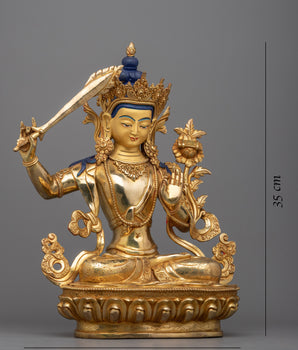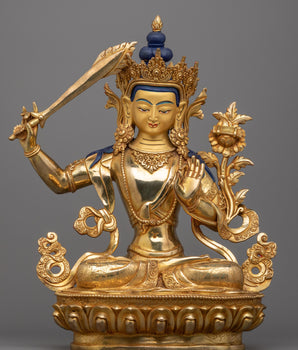Handcrafted Scriptures That Carry a Culture’s Soul
The Tibetan prayer book symbolizes the connection between religion, style, and heritage, leading to religious art that lives beyond our current age. Every part of sacred scripture merges with ordinary language, and each paragraph has a greater meaning. The book contains words and is a spiritual guide for those practicing meditation, chanting, and different rituals. Mantras and prayers fill each page, and people who read them are thought to reach a deeper level of understanding and kindness. Being a cultural treasure, the prayer book protects the wisdom of Tibetan religion and identity by displaying and using the main principles of Tibetan Buddhism.
What is the Prayer Book?

A prayer book holds many prayers, sacred songs, hymns and texts that people or groups use for their regular religious activities. They offer guidelines for worshiping, praying, chanting and recitation during ceremonies. Manuscripts contain the beliefs and important teachings of a particular religion which help people communicate with God. They are important in several cultures for preserving old languages, customs of worship, and traditional wisdom. Faith and devotion are preserved with the help of these sacred objects, which demonstrate the wish for spiritual connection.
Each religion has its own kind of prayer books, but they typically include:
- Daily prayers
- Sacred chants or mantras
- Scriptural readings or verses
- Instructions for rituals or ceremonies
- Devotional hymns
Historical Origins of the Tibetan Prayer Book
In the 7th century CE, Buddhism was brought to Tibet thanks to the influence of its two neighboring countries, India and Nepal. An important event under King Songtsen Gampo (ruled 617-650) was introducing the first Tibetan script, adapted from the Brahmi script of India, which was later used for preserving Buddhist teachings. Buddhism was more deeply established in the country under King Trisong Detsen, who invited Shantarakshita and Padmasambhava from India to help set up the first Buddhist monastery, called Samye. As a result, an important period began for translators, and the Buddhist scriptures were written down in Tibet for the first time.
The combination of Tibetan monks and scholars working with Indian teachers brought about thousands of accurate translations of sacred texts, giving rise to the two large books known as the Kangyur and Tengyur, central texts for Tibetan Buddhist teachings and worship. The translation movement developed Tibetan vocabulary, making it adapted for philosophical discussions.
When Tibet was taken over by China in the 1950s, prayer books helped preserve the country’s spiritual heritage. Monasteries among exiled communities became centers for saving scriptures and places were created to print and publish the religious texts using what survivors knew or had left by hand.
The Role of Prayer Books in Tibetan Buddhist Practice
A prayer book guides spiritual practice, aiding practitioners in concentrating, finding inner peace, and connecting more with the divine. It helps with daily prayers and allows its users to reach a calmer mind faster. Frequently saying prayers and chants from manuscripts helps improve your mind, feelings, and spiritual growth. Tibetan Buddhist monasteries are places where they help monks and nuns unite in recitation, building a special atmosphere for spiritual devotion. They are an important tool for saving key teachings and making them easy to learn. These writings connect history, thought, and faith, as well as reading and experiencing faith personally.
Sacred Chants: The Origin of Our Spiritual Path

Tibetan prayer books hold mantras or chants that can help transform people. They should be intoned or chanted out loud, as often people need a deep spiritual experience from them. The well known mantra 'Om Mani Padme Hum,' a six-part chant for Avalokiteshvara, the sage of compassion. The mantra is thought to reflect kindness and encourage affection, make ego-related thoughts less, and bring inner calm.
According to Tibetan Buddhists, repeating these mantras removes bad actions, gains merit, and helps increase knowledge. People at monasteries regularly come together to sing these verses, usually with ritual tools and musical notes. Reciting mantras in solitude allows the mind to concentrate on the chant and forget the worries around it. Tibetan Buddhist devotion depends on these chants.
Types of Tibetan Prayer Books
1. The Kangyur and the Tengyur Collections
- The Kangyur has many of Buddha’s instructions, such as sutras, Vinaya, and tantras. Reciting any one page is regarded as being highly valuable.
- The Tengyur contains Indian masters’ interpretations of Buddhism’s philosophy, ethics, and meditation.
Both are extensive, special collections found in monasteries and usually not in the hands of people.
2. Daily Use Texts
- Ngöndro means to do basic practices such as prostrating, saying mantras, and visualizing.
- Instructions for deity yoga, including for Tara or Avalokiteshvara, are included in the Sādhanas.
- Lung (Oral Transmissions): At one time, teachings and blessings were transferred orally from seniors.
- Such books are easy to handle, take up little space, and are popular in both one-on-one sessions and groups.
3. Personal Practice vs. Essential Practices
- In the tradition of monasteries, there were many religious texts, debate books, and ritual handbooks.
- Holidays are often observed by reading sacred texts or prayers within a family’s home.
- Each version helps practitioners access divine teachings and grow spiritually every day.
Handmade Craftsmanship: A Living Tradition
Apart from their spiritual value, Tibetan prayer books stand out due to the great care and accuracy used during their handcrafting. While mass production of books exists, these stand out as proof of careful work and artistic effort. Over many years, Manuscripts have been created by monks and skilled craftsmen who learned the skills from their predecessors. You need to do the following during this process:
- Many people appreciate that handmade paper is very long-lasting and eco-friendly; commonly, it is made using mulberry bark or lokta fiber.
- Plant-based inks and dyes to preserve legibility and to make sure the products are durable.
- Patience and careful attention are required for woodblock printing. All characters or pages are created in reverse on wooden carvings.
- Coverings are often made of cloth or wood, at times with silk brocade or holy images added as decoration.
Setting up a single prayer book takes a long time, with the process taking weeks to even months. People consider this labor special, as it becomes a worthy and spiritual gift. In a few monastic communities, crossing the threshold and making these books is considered virtuous, as each text represents an act of kindness and helps cleanse their karma. Besides their knowledge, these books carry the faith of the artisans who created them.
Pecha Style: The Backbone of Pecha Kucha

The Tibetan prayer book has its own shape and purpose, usually being made in traditional pecha style, a stack of unbound horizontally folded sheets between two wooden covers. The originality of this work is based on old Indian manuscripts written on palm leaves, forming a lineage that connects with the nation’s founding Buddhist texts.
The pecha format serves both a practical and a symbolic role:
- Being horizontal, the text can be laid out for many people to chant or recite together, which happens frequently in temples.
- The separated sheets make it possible to open any folio quickly, without turning over a bound book. Because of this, the books are lightweight and easy to access.
- The organization of the text shows that the content adheres to Buddhist history, reproducing the original records used to teach what the Buddha taught.
Covered by a carved or painted cover, the texts offer a unique protection for their sacred contents and also set the sacred mood for each reading. Pechas are not just books for monks, nuns, and lay followers; they are living objects that monks and nuns believe have sacred uses. The style supports the participation of many, so texts are frequently read or chanted by several members of a monastery together.
Aesthetic Dimensions and Artistic Influence
Besides being texts for spiritual use, prayer books from Tibet are beautiful handcrafted objects that reflect Tibetan culture for ages. Paintings and mandalas of Tibetan Buddhism play a big role, as they commonly reflect what is described in the teachings. In some finely produced manuscripts, gold, silver, or precious stones are used to highlight the great worth of the teachings and to reflect the special respect for sacred wisdom. When elaborate sculptures or depictions of gods are added to the book plus lucky symbols, it becomes perfect for those who want to give or receive a work for worship.
The prayer book is not only a book, but something that appeals to several senses. The paper, the smell of its organic dyes and the sweeping strokes of scroll writing enhance the total spiritual effect. Each page is designed with symmetry and balance to show a harmony that Buddhist teachings value. Using art, prayer books guide spirituality and demonstrate that beauty and wisdom are closely associated in Tibetan Buddhism.
Modern Interpretations and International Conservation

Click Here To View Our Handcrafted Prayer Book
Traditional Buddhists use Tibetan prayer books, and these texts are also used in modern ways. In many countries, individuals who are interested in religion, spirituality or healing use these texts in the languages they speak. Because of modern technology and new books, the wisdom of Tibet is more accessible and easier to hand down across the globe. With the help of their advice, anyone can learn how to be more mindful, caring, and at peace.
Ancient prayer books are held as important cultural items in collections across the globe. Important works from the Tibetan diaspora are found in the Library of Tibetan Works and Archives in India, the British Library in London, and the Rubin Museum in the United States. Texts like these are regularly shown at the Asian Art Museum in San Francisco and the Musée Guimet in Paris, often together with sacred art. Using something like the Buddhist Digital Resource Center (BDRC), teaching texts from Tibetan Buddhism have been made online, guaranteeing that they remain an important part of global heritage.
Conclusion
The Tibetan prayer book acts as an ongoing link between the religious and the practical, mixing devotion, fine handiwork, and cultural traditions. The tradition continues to value the wisdom from Tibetan Buddhism and displays the compassionate, wise, and mindful style of its originators. Each word printed by hand and each woodblock individually designed turns it into a source of spiritual wisdom and an important marker of the religion’s history.
From the first monasteries in the Himalayas to the archives now, the Tibetan prayer book reveals how people everywhere believe wisdom, peace, and spiritual bonding are important. Because these manuscripts influence and inspire so many, we discover that true sacred knowledge still has value as long as it exists anywhere or is practiced by anyone. The Tibetan prayer book is showing acts of compassion and strength to many people, both alone during meditation and when coming together for chants and looking at Tibetan paintings.





